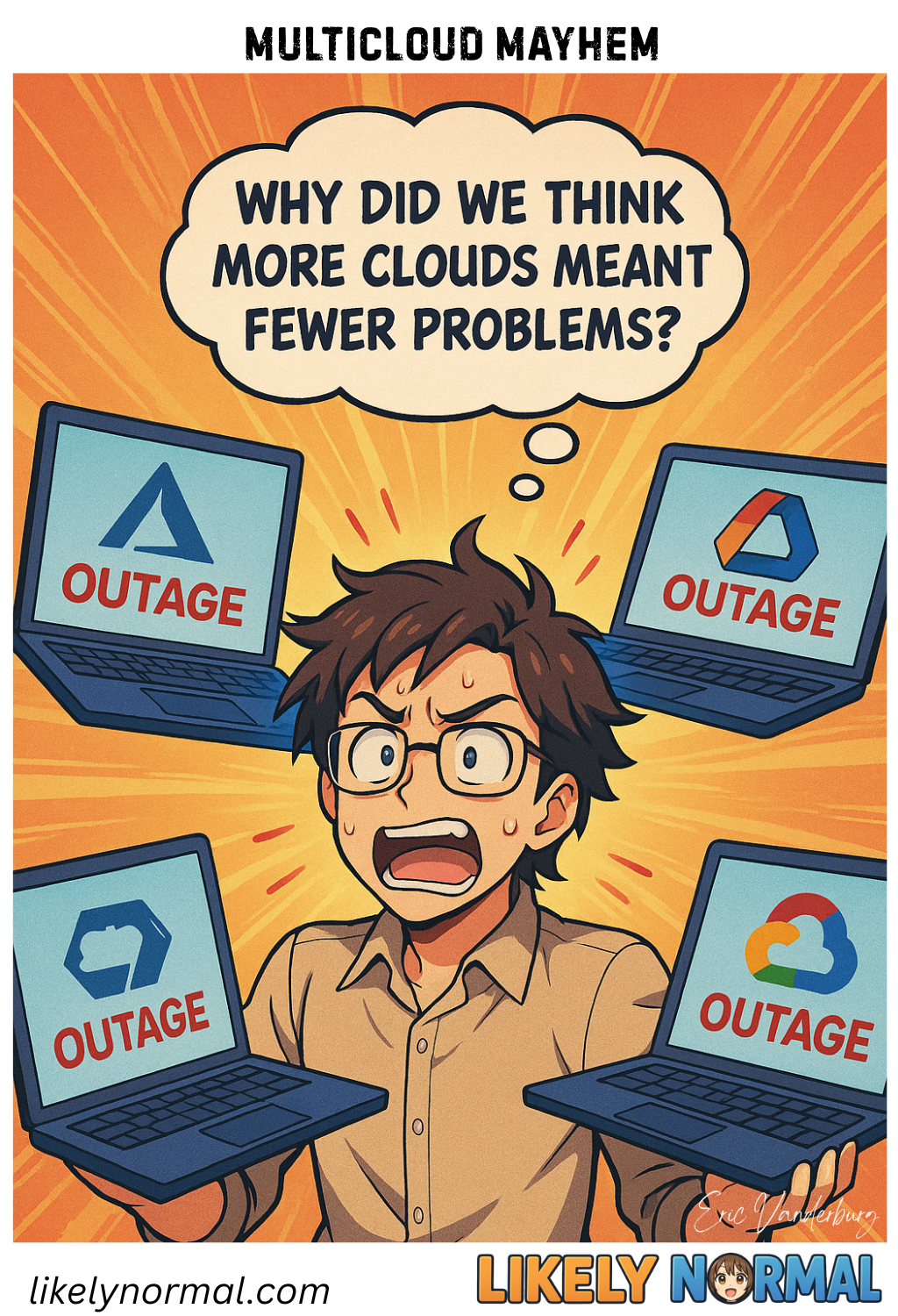Multicloud Mayhem
The tech world’s version of juggling chainsaws while riding a unicycle is managing the multicloud without a dedicated multicloud management suite. Sure, spreading your apps across AWS, Azure, and Google Cloud sounds smart (“We’ll just use the best of each!”), until you realize you’ve signed up for a lifetime of playing platform translator between three vendors who refuse to speak the same language. One cloud’s “serverless” is another’s “functions,” and don’t even get me started on the egress fees—those sneaky little charges that turn “moving data” into a heist movie where your budget plays the victim.
Security? Oh, just a casual game of Whack-a-Mole with policies that work on AWS but mysteriously vanish in Azure like a magic trick gone wrong. “Wait, why is our encryption setting now a premium add-on?!” And compliance? It’s like herding cats, if the cats were regional data laws and one of them was GDPR, staring at you like a disappointed teacher.
The real kicker? Your team’s résumés now need to read “Fluent in Cloudish, Azure-ese, and Google Gibberish.” Because nothing says “fun Friday” like debugging why your AWS Lambda won’t talk to your Azure SQL DB, while your Google Kubernetes cluster watches from the sidelines like “lol, good luck.”
Bottom line: Multicloud is like a buffet where every dish requires a different fork—and also, the forks cost extra. Bon appétit!
(P.S. If your CFO asks “Why is our cloud bill bigger than our rent?” just whisper “optimization in progress” and slowly back away.)

Discussion ¬